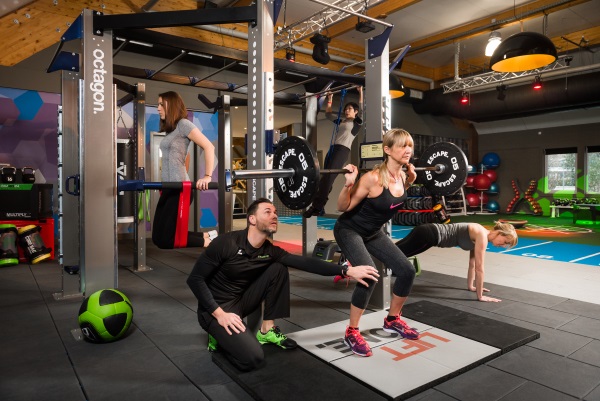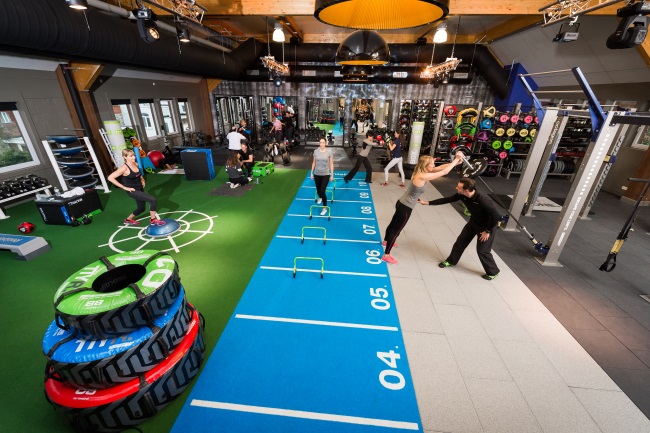myAspria Editor Maïté Mignot takes a close look at functional training.
Functional training in detail
You’ve probably heard of the term ‘functional’. What does it mean?
Classical (or analytical) training asks you to flex your forearm, for example, by lifting a dumbbell. You’re going to work the biceps and elbow joint. Functional training, however, favours movements which reproduce those of your sports activities or simply those of everyday life. The biceps exercise of analytical training will become a pulling exercise in functional training. You’ll still be working the biceps, but also the shoulder muscles, the upper back muscles and the chest. Don’t be alarmed: the pulling exercise is a difficult one at an advanced level. It’s just an example to illustrate!
Who is it for and why?
I also refer to the functional training zone as the ‘playground’. The training exercises can be performed by anyone at any level and are great fun. You work in a circuit and follow a varied sequence of exercises, adapted to your needs.
A young mum could do bending, lifting and rotation exercises which will help her carry her child, and will also help with putting the stroller in the car and lifting it out again, for example. An older person will probably work on bending and extending the legs to develop the strength needed to sit down and get up again completely safely. A golfer or tennis player will aim to improve stability and muscular control, while compensating for the imbalances caused by these asymmetrical sports.
 A final important element of functional training, which concerns everyone this time, is that it involves the core muscles of the body. A bit more jargon (sorry) these are the muscles located between the ribcage and the hips: abdominals, lower back and pelvic muscles. These muscles help you balance and co-ordinate movements combining the upper and lower back, and they also contribute to good posture which reduces the risk of problems with your back or neck.
A final important element of functional training, which concerns everyone this time, is that it involves the core muscles of the body. A bit more jargon (sorry) these are the muscles located between the ribcage and the hips: abdominals, lower back and pelvic muscles. These muscles help you balance and co-ordinate movements combining the upper and lower back, and they also contribute to good posture which reduces the risk of problems with your back or neck.
Functional training therefore helps you to improve those essential qualities of your everyday life, such as agility, co-ordination, speed and strength. And that’s at the same time as working your cardiovascular system and fat-busting.
Trying it is taking it up! You’ll never give it up because the exercise options are endless and, above all, you’ll appreciate its benefits every day. It’s addictive.
You’ve been warned…







